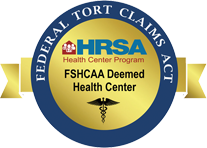Most of us have been bitten by an insect at some point. Mosquito, fly, wasp, bee, and similar insect bites or stings are common. They usually cause a mild reaction as our bodies react to the venom or other proteins that get injected or transferred to us through their saliva. The most common insect for people to be allergic to is bees.
Redness, swelling, itching, and pain are usually present at the site of the bite or sting. These symptoms are usually annoying and temporary with no serious or lasting health problems. Some people, however, can have a serious reaction, especially to bee stings. Symptoms of a severe allergic reaction might be hives; abdominal cramps; nausea and vomiting; swelling of the face, lips, or throat; breathing problems; and shock. The first thing to do for anyone who is experiencing a severe allergic reaction is to call 911. The second thing is to see if that person has an epi-pen, and if so, administer it. The third thing is to have the person lay down quietly with their legs elevated. It is important to keep them calm. If the person vomits, turn them on their side so they do not choke. Do not apply a tourniquet as this could make matters worse and do not give them anything to eat or drink. If the person experiencing the allergic reaction becomes unconscious and stops breathing, begin CPR immediately and continue until medical help arrives.
When a bee stings, it will leave behind a stinger attached to a venom sac. Remove the stinger as quickly as possible using s scraping motion. Do not use tweezers as this can pinch the venom sac and inject more venom. Wasps can sting more than once because they do not leave a venom sac behind when they sting. Wash the area carefully with soap and water two to three times a day until the skin is healed. You can also wrap an ice pack in a towel or use a cold wet washcloth and apply it to the sting to help with swelling. Taking acetaminophen or ibuprofen can help with the pain. An over-the-counter oral antihistamine, a corticosteroid cream, or calamine lotion can help with the itching or pain.
Scorpion stings are not as common as bee or wasp stings, particularly in this area, but if you do get stung, the area of the sting will hurt and may get red or swollen. Immediately wash the area with soap and water and apply a cold compress or ice wrapped in a washcloth. Most scorpion stings are severely painful, but of little consequence. In certain parts of the country, though, there are scorpions that are dangerous and life threatening. Call your local emergency room to find out about scorpions in your area. If in doubt, you can always go to the emergency room. Unlike with snakebites, it can be beneficial to capture the scorpion (a glass jar works well). and bring it to the emergency room with you. Knowing what type of scorpion stung your child can make treatment easier.
Ticks are common in this area. It is important to check your kids and pets for ticks after they’ve been out in the sagebrush or in a wooded area. Ticks can cause Lyme disease but if the tick is removed in twenty-four to forty- eight hours it is less likely to transmit it. To remove a tick use tweezers to grasp it firmly at its head and mouth, next to the skin. Pull steadily and firmly upward until the tick lets go, then swab the site with alcohol.
Ways to prevent stings or bites involve common sense: do not disturb a bee or wasp nest; don’t swat at buzzing insects (they will sting if they feel threatened); wear shoes when walking outdoors; use insect repellent when camping or hiking; avoid still pools of water in hot weather as this is where mosquitos breed; in tick country, stay in the center of the trail, tuck cloths in, and keep covered as much as possible; and wear gloves when gardening.
Candice Hutchins is a registered nurse at Health West Pediatrics. She has been working primarily with mom and babies and children for 16 years, and is a 2003 graduate of BYU-Idaho.

Movement is key to health







